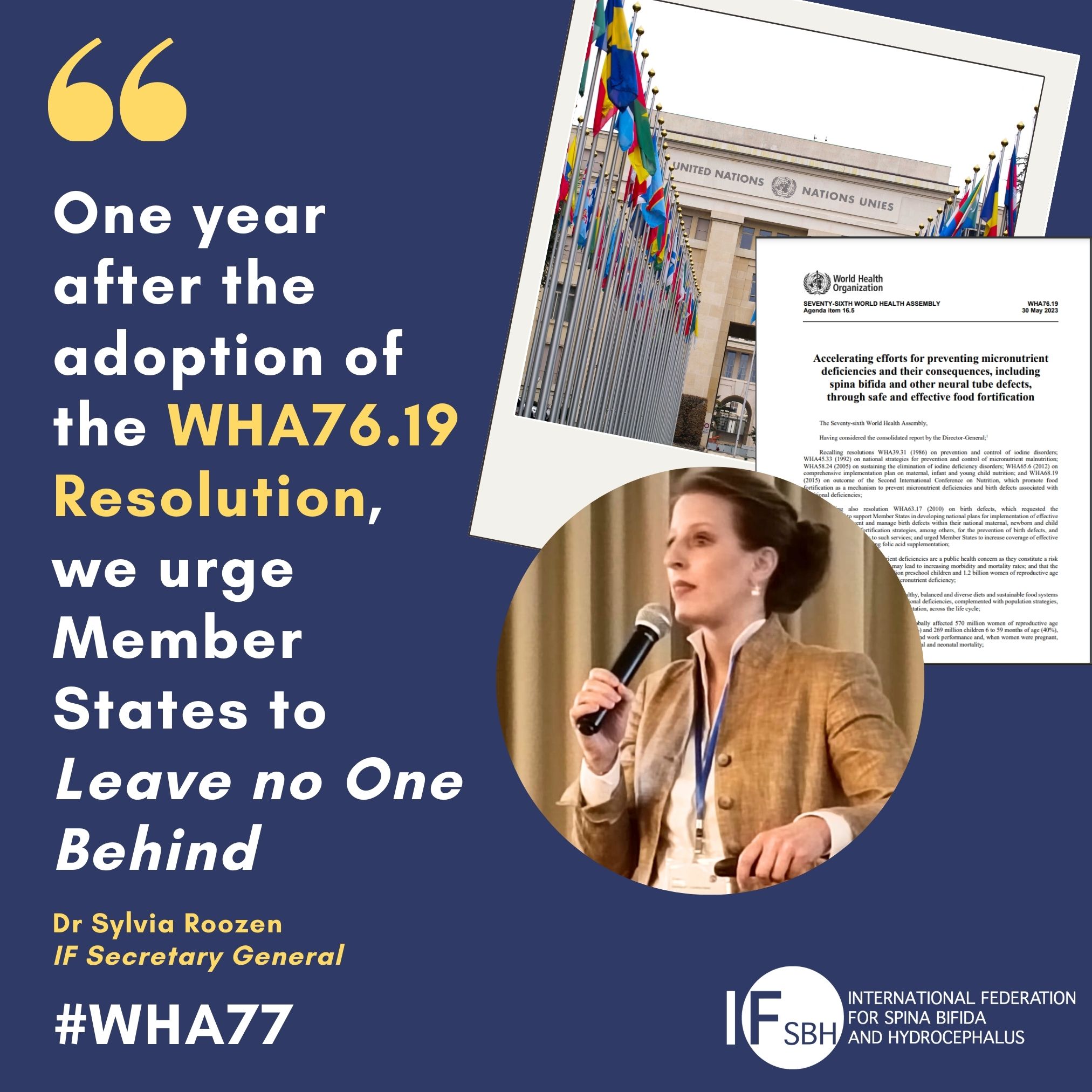One Year after the Adoption of the WHA76.19 Resolution

The World Health Assembly (WHA) is the World Health Organization’s (WHO) decision-making body, where the Member States come together to vote. It usually takes place in May and is attended by delegations from all WHO Member States. The assembly focuses on a specific health-related agenda prepared by the Executive Board (WHO EB).
This year marks the seventy-seventh World Health Assembly (WHA77) where we celebrate one year one year after the WHO EB decided to recommend to the WHA76 the adoption of the following draft resolution ‘Accelerating efforts for preventing micronutrient deficiencies and their consequences, including spina bifida and other neural tube defects, through safe and effective food fortification’.
The International Federation for Spina Bifida and Hydrocephalus (IF) celebrates this important milestone towards reducing the prevalence of Spina Bifida and other Neural Tube Defects (NTDs) worldwide. IF has been at the forefront of the advocacy for large scale food fortification of staple foods with folic acid since evidence emerged regarding the important role folic acid (Vitamin B9) can have in reducing risks of NTDs (see IF’s Statement here). An advocacy that has been achieved through partnerships with a wide range of stakeholders, including successful projects through private-public-civil initiatives, for example Smarter Futures.
On behalf of the global SBH community, IF Secretary General – Dr Sylvia Roozen urged Member States and partners during the WHA77 to leave no one behind.
Dr Roozen emphasized in her speech on the important role of partnership: “The WHA76.19 Resolution shows the strong interplay of policies from health, nutrition, and disability. If we really want to implement the 2030 Agenda, we also must take a disability rights approach in our work“.
The WHA76.19 Resolution can really transform the way the world tackles the global challenges of malnutrition and prevention. Now is the time that we, as a society, take the burden and responsibility for reducing the risks of NTDs in pregnancy away from women and the shame and stigma that this approach results in.


